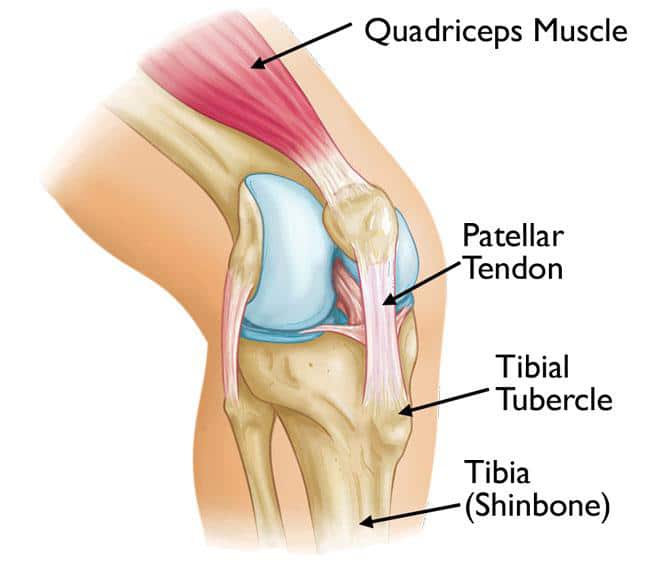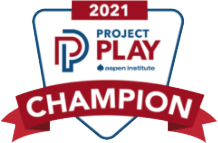Osgood Schlatter Rehab Program
Posted by: Julie Graves | Head Athletic Trainer & Director of Sports Medicine
Osgood Schlatter is a condition that causes pain and swelling below the knee joint, where the patellar tendon attaches to the top of the shinbone (tibia), a spot called the tibial tuberosity. Although there is no cure for Osgood Schlatter’s, pain management is key for being able to continue playing.
Getting the knots out of the muscle belly of the quadricep muscles is crucial to decreasing pain and inflammation of the patellar tendon from pulling on the tibial tuberosity. Follow these steps:

Step 1: Heat
The first step in treating Osgood Schlatter’s is to heat the quadricep muscles using an electric heating pad or hot Epsom salt bath for 15 minutes.
Step 2: Foam Rolling
The next step is to foam roll the whole lower body (quads, hamstrings, IT Band, and calves) twice a day to prevent injury. A lacrosse ball, baseball, or softball is better for the calves as it is a smaller surface area.
It is essential when foam rolling to go very slowly and controlled. This should not be a quick, rushed motion. There are trigger points/knots/pain points in every muscle in our body and so when you go over one of these knots/pain points, stop on them for at least 30 seconds to allow it to release. Then slowly roll down the muscle until the next one is found. This can be fairly uncomfortable/painful, but it is a GOOD pain!
Step 3: Stretch
Here are some stretches you can perform at home:
Step 4: Dry Needling
This is the cherry on top of all the work above. The technique uses a “dry” needle, one without medication or injection, inserted through the skin into muscle areas. Other terms commonly used to describe dry needling include trigger point dry needling and intramuscular manual therapy. Dry needling is not acupuncture, a practice based on traditional Chinese medicine performed by acupuncturists. Dry needling is a part of modern Western medicine principles and is supported by research. Dry needling is done by physical therapists and chiropractors. Reach out to Julie if you need help finding a certified dry needler!
Step 5: Protective Equipment
- Cho-Pat knee to be worn during activity (example). This releases some of the tension of the muscle tightness and distributes the force around the patellar tendon.
- PREVENTATIVE T:25 Knee Wearable. Julie recommends this to many athletes with patellar tendonitis, Osgood Schlatter, and many other knee injuries, and it has helped a lot. Wear as directed from the website. *Note: Don’t wear the T:25 and the Chopat strap simultaneously.
Step 6: Ice Cup Massage
Ice cup massage around painful areas after activity. Buy paper dixie cups at the store, fill them up with ice, freeze them, and then tear down the top of the cup so the ice is exposed. Ice massage for 10-15 minutes after activity.
Find out more about the CRYSC Sports Medicine Program by visiting our website. If you would like more information on natural solutions and the athlete, please don’t hesitate to reach out to CRYSC’s Head Athletic Trainer, Julie Graves, at [email protected].









